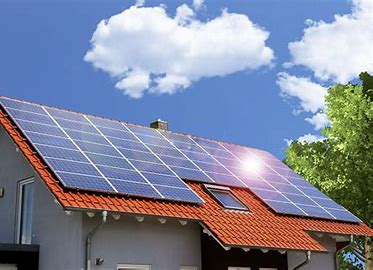Solar Federal Tax Credit Increases
The Inflation Reduction Act increases the solar federal tax credit from 26% to 30%, effective immediately!
How the New Solar Tax Credit in the Inflation Reduction Act Works
The Clean Energy Credit allows you to subtract 30 percent of solar costs off your federal taxes, through 2032.
Amid rising electricity and home and commercial energy costs across the country, the Inflation Reduction Act makes installing solar panels and storage batteries a more attractive investment for many homeowners and business owners than it was even a couple years ago.
With the new legislation’s Clean Energy Credit, you can subtract 30 percent of the cost of installing solar heating, electricity generation, and other solar products from your federal taxes. The credit is a reboot of an older, less valuable federal tax credit and will be available to taxpayers for more than a decade. That means homeowners and business owners considering solar installations have plenty of time to consider their options.
What is the solar Federal tax credit? If you install solar energy equipment in your residence or business any time this year through the end of 2032, you are entitled to a nonrefundable credit off your federal income taxes, equal to 30 percent of eligible expenses. There’s no dollar limit on those expenses; you’re entitled to that 30 percent tax break whether you spend $30,000 or more than $3,000,000 on costs associated with a residential or business solar system.
The Inflation Reduction Act INCREASES the current solar federal tax credit from 26% to 30%!
How will the solar tax credit save you money? The credit lowers your federal taxes. So if you spend $30,000 on a system, you can subtract 30 percent of that, or $9,000, from your federal taxes. (You must take the credit for the year the installation is completed.) If, say, you would owe $25,000 in taxes before the credit, a $9,000 credit would drop what you owe to $16,000. If you cannot use the entire credit in a given tax year you can carry forward that remainder into a later tax year.
You’ll save, too, in lower electricity bills. How much you’ll save depends on a number of factors, including how much electricity your household or business uses, the size of your solar system and amount of sunlight it gets, and local electricity rates. Real estate experts say a purchased solar system—as opposed to a leased one—can raise the value of your home when you sell.
How long does the solar tax credit last? The 30 percent credit lasts until Dec. 31, 2032. It drops to 26 percent in 2033, then 22 percent in 2034, and disappears in 2035, unless Congress continues it.
Who can get the solar tax credit?
It’s available to all taxpayers for their primary or secondary residence located in the U.S. Taxpayers of any income level can take advantage of it. You can use it whether you itemize your taxes or take the standard deduction. Businesses may install on any company-owned facility or land and take the credit.
Keep in mind, though, that the solar tax credit is available only if you purchase a solar system; if you lease one, you can’t take advantage of the credit. If you are a tenant-stakeholder in a co-op, you can claim credit for your proportion of the purchase. You can also claim credit for your proportion of the purchase of a community-owned solar system.

Contact Us!
Get your turnkey commercial solar and battery proposal with ROI and financing options by e-mailing us your electric bill (12 months for commercial), a picture of your electrical panel or switchgear, and a picture of the roof material today: info@beachcitiessolarconsulting.com

